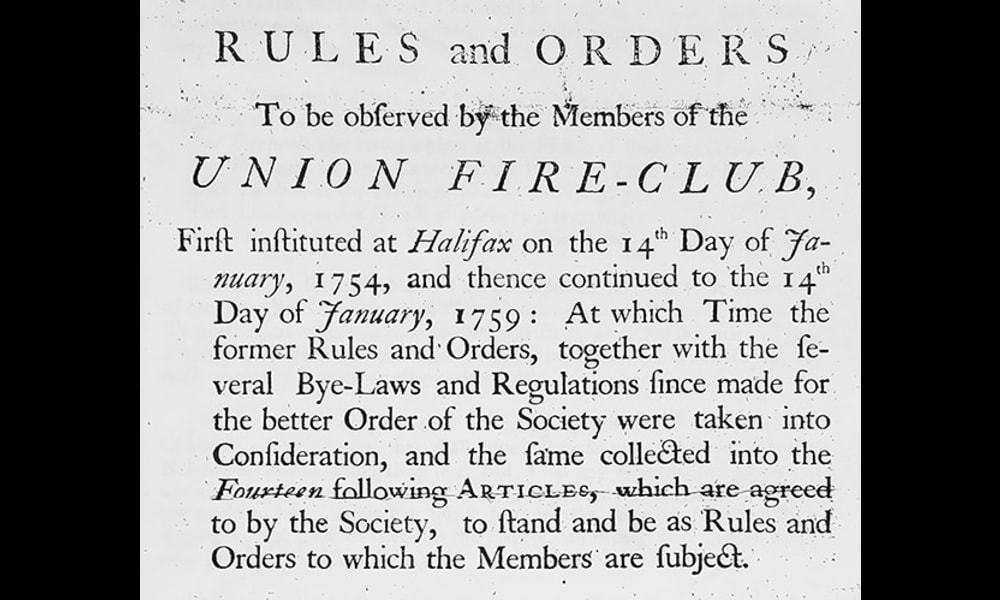Thanks to an unexpected discovery in the walls of a home being renovated in Halifax some years ago, we know that Canada's first organized fire company was that of the society known as the Union Fire-Club, founded on Monday, January 14, 1754 (Bushell 1759). The mandate the society gave itself was two folds:
I. To report to the scene of all fires that could occur in the town of Halifax and its suburbs and to salvage the content of the house or houses threatened by fire and to put out the fire if able to do so, and,
II. To inspect chimneys in the neighbourhood in which each of the members lived. If a chimney was found to be defective, they would request the owner to fix it, and if he refused, “proper steps” would be taken to “oblige him to it” (see Appendix C). There is no mention of what those steps were, but we assume that it would have been referred to the Firewards, who were the authority for anything fire-related.
Regarding the second mandate of the society, and considering that most colonial homes at that time had central chimneys with multiple flues so that fires could be lit in two or more rooms on each floor (Polson 2021), the number of chimneys in Halifax must have been quite impressive! Wood burning in a fireplace was the only method available for heating a home and cooking, as wood stoves became fashionable later on.
The Equipment
Each member was given two leather buckets, each capable of containing three Imperial gallons of water, and two salvage bags made of four yards of canvas each. There were rules regarding the storage and use of these items; they were to be stored close to the front door and were only for firefighting activities. Two members were appointed every first Tuesday of every month to enforce the rules, with the task of visiting every other member’s home for compliance purposes. Failure to observe these rules was met with a fine; amounts would vary depending on the offence and its frequency. The society had a stock of leather buckets to replace those lost at fires or damaged beyond repair. They also had two “firehooks” and ten ladders stored at five of their member’s houses.
The Members
The Union Fire-Club’s rules and regulations are the only sources of information available at the moment. However, who constituted the Society is important since it sheds some light on the organization itself and the events of early Halifax. In the years before the American Revolution, Halifax was dominated by a merchant élite, and the members of the Union Fire-Club belonged mainly to this group. Two individuals founded the Union Fire-Club: Thomas Saul and Charles Procter. They were followed two months later, on March 5, by four more: Samuel Shipton, Benjamin Gerrish, William Pantree, and Isaac Deschamps, and five more joined during the year. As of January 14, 1759, thirty-two were legibly listed as members of the Society, while two were unfortunately unreadable on the document for a total of thirty-four men. The two mystery names could be those of Richard Bulkeley and James Scott. The date beside each name represents their admission into the Union Fire-Club. Most of the members were prominent figures in Halifax. One can read extensively about most of them in the Canadian Dictionary of Biographies online.


